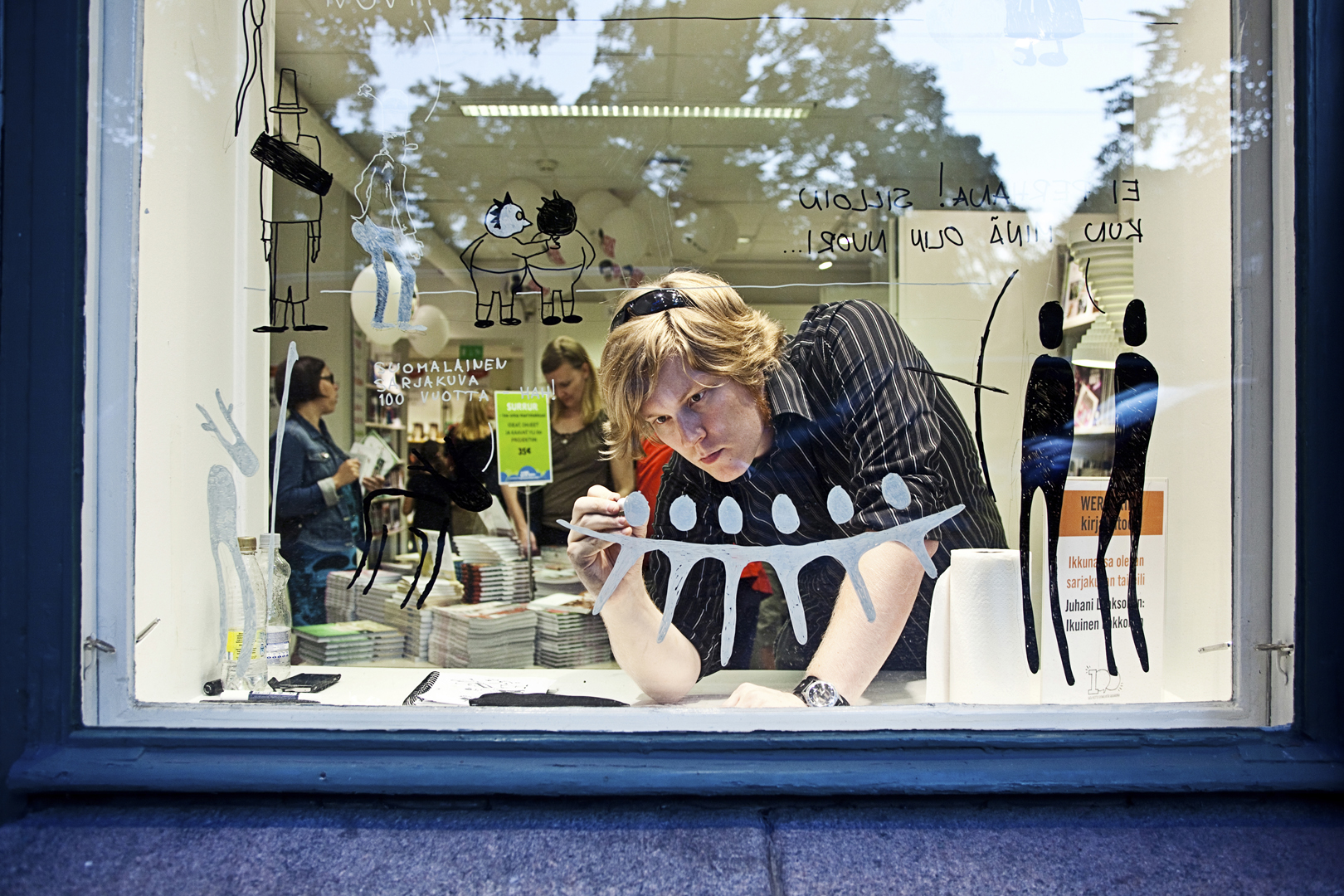Sitra publishes the results and experiments of the New Democracy forum, and the Ominvoimin report, which maps the ‘democracy of action’.
The difference between the new democracy and the traditional society of active participation lies in the nature of the operations, the funding, the use of the internet and collective wisdom, or the wisdom of crowds. These new forms of participation complement the traditional ways, and this is what we mean by the democracy of action.
At the same time, the pressure within democratic institutions to find solutions for the challenges of traditional democratic participation increases. The answers can be found in increased openness, bolder experimentation with new methods, and when the public and administrations link up to brainstorm and develop ideas together.
Turmoil
“Finnish society is currently experiencing great changes,” according to Sitra’s President Mikko Kosonen. “Turmoil in administration, the economy and the social participation are almost daily occurrences. The municipal reform raises strong feelings, and the global financial crisis makes many feel powerless. “
Kosonen also believes a wider social change is in progress, with the public assuming an increasingly active role: “This sets major challenges for the ability of politics and the democratic system to renew.”
A rise in participation methods based on local, real action can already be discerned. But these methods nonetheless remain well in line with the Finnish age-old tradition of gathering to work together on a voluntary basis. Examples include independent food or energy production circles, the movements to bring new life to neighbourhoods or the activities being spread by social media, and which are already directly influencing political decision-making.
Hands-on and spontaneous
Professor Liisa Välikangas of the Aalto University spoke at Sitra’s New Democracy media conference. She has her own definition of ‘democracy of action’: “The new kind of active participation smoothly passes by traditional institutions, the media and old structures, making use of the internet and the wisdom of crowds, organising operations in a flexible and independent manner and gathering funds through microfunding instead of government subsidies.”
Along with Marja-Liisa Niinikoski, Välikangas co-wrote a commentary piece published on the editorial page of Finland’s largest newspaper, Helsingin Sanomat. Their thoughts on the matter are complemented further by the recent publication of Sitra’s Ominvoimin report: “New social enterprise is spontaneous. The distance between these activities and the public administration is clearly bigger than has been the case for traditional civic organisations.
“The new kind of organisations typically engage in innovative hands-on searches for concrete solutions to problems at hand, such as the availability of better food or cleaner energy. They are not necessarily interested in being involved in representative democracy; participation may be a one-time activity or campaign, or take place strictly within a community to tackle a particular issue,” says Välikangas.
Coping with the changes
What can be done to ensure that the reliability of operations and the aspects of administration that function well survive the change, while the targets of innovation and improvement are developed?
Senior Planning Officer Niklas Wilhelmsson of the Ministry of Justice participated in Sitra’s New Democracy forum and has worked with 30 other democracy experts to outline the vital democracy of the 2010s. “There is a need for increased discourse as well as genuine cooperation and development work between administrations and the pioneers of the new activities in order to ensure that everyone works toward the same targets,” he says.
“Therefore, it would be important to create methods for administrations and the public to more easily work together to develop services and avoid the pitfalls of traditional borders.”
Bureacracy and democracy
Sitra’s New Democracy forum developed experiments with the objective of promoting a culture of experimentation within administrations and adapting the role of public office-holders into one which encourages the active participation of the public.
“Democracy too often comes to a standstill when facing needless bureaucracy and a closed administrative culture,” says politician and activist Johanna Sumuvuori, who took part in the forum. “Increased openness and the flexibility of administration provide the public with more opportunities to be heard. Hearings organised from the top down are not enough. Immediate democracy means that operations are spontaneously initiated by the public. This spontaneity must be supported by any means possible instead of hindering or preventing it through inflexible bureaucracy,”
Adhering to this theme, the forum experimented with participatory budgeting, crowd sourcing of information requests and a social hub where the people working with democracy and participation can meet and work together.
The second Synergise Finland forum, launched in autumn 2011 as a part of Sitra’s training operations, gathered an all-round team of people to find answers to what vital, synergetic democracy of the 2010s would be like. Participants included people working in the fields of traditional or new democracy as well as various representatives, activists and interested laymen.
More than 140 ideas and ongoing democracy projects in Finland came to light during the forum. The results of the forum included concrete experiments carried out together with the Mind research team. The experiments were targeted at discovering the potential starting points of small changes.
Director Mika Kalliomaa of Synergise Finland sums up the forum’s accomplishments: “The ongoing change is so huge that one exercise could never solve all the issues. The forum produced ideas of where the greatest changes lie, and new concrete ways of living out democracy; these will continue to be developed, but first and foremost the forum was a tool for opening public discussion on the theme. Democracy is a wonderful invention, but it must change with the times. We must have the courage to do that.”
More information
Synergise Finland forum New democracy: www.sitra.fi/uusi-demokratia
The Ominvoimin report (only available in Finnish): http://ominvoimin.com/ominvoimin-raportti-valmistui/
The democracy experiments launched by the Synergise Finland forum:
https://www.sitra.fi/artikkelit/2012/ideoista-kokeiluihin
A chart of current democracy activities:
http://www.kansanmuisti.fi/storage/uusi-demokratia/
